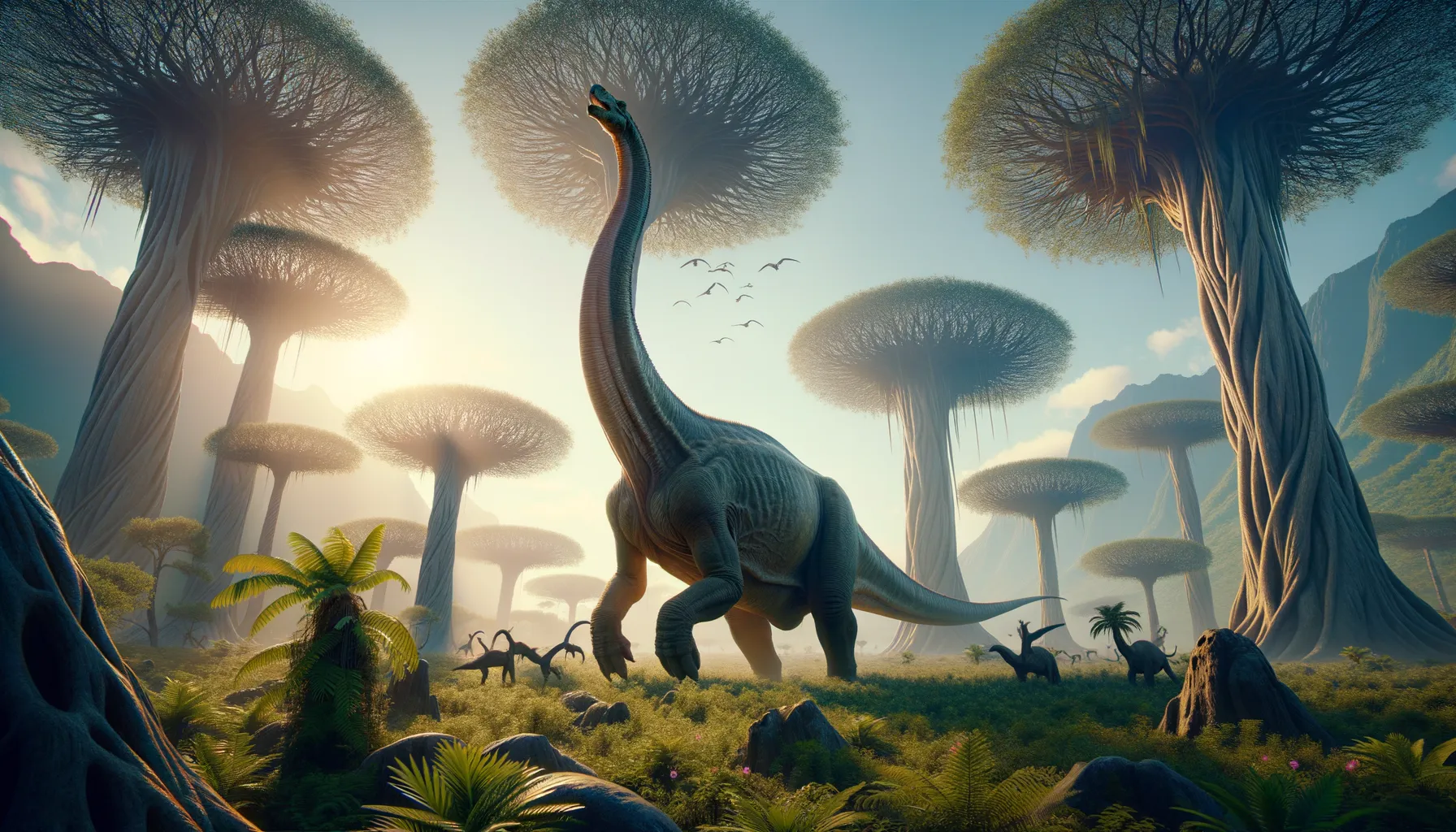
Barapasaurus
Early giant of the Jurassic forests!
Period
Jurassic
Length
About 18 meters in length.
Height
Around 5 meters tall.
Weight
Approximately 7.5 metric tons.
The Barapasaurus was one of the earliest large sauropods, known for its massive size and long neck. Living during the early Jurassic period, this dinosaur roamed what is now India, supporting its herbivorous diet with foliage from tall trees. Fossils reveal its impressive stature and plant-eating adaptations. As a quadrupedal creature, it represents a fascinating example of early dinosaur gigantism in an era of evolutionary expansion.
Diet
Barapasaurus was strictly herbivorous, relying heavily on the lush plant life of its environment. Its long neck allowed it to reach vegetation from tall trees, while its strong teeth helped it grind up tough plant material.
Hunting
Being a herbivore, Barapasaurus did not hunt but rather grazed on foliage. It would move slowly through its habitat, using its size as a deterrent against predators rather than any form of hunting.
Environmental challenges
Barapasaurus faced environmental challenges such as periodic droughts that reduced the availability of edible foliage. This scarcity would have forced migrations in search of more abundant food sources, possibly across vast distances. Additionally, the presence of predators meant they had to stay in herds for safety.
Speed
Believed to have been slow and steady.
Lifespan
Estimated to live around 30 to 40 years.
First discovery
Discovered in India during the 1960s.
Fun Facts
- Barapasaurus is one of the oldest known sauropod dinosaurs, having lived about 184 million years ago during the Jurassic period.
- The name 'Barapasaurus' means 'big-legged lizard' in reference to its robust limb bones.
- Barapasaurus fossils were first discovered in India in the early 1960s.
- This dinosaur is estimated to have been about 18 meters (60 feet) long, making it quite large for its era.
- Barapasaurus likely had a long neck which helped it to reach high vegetation for feeding.
- Only a single species of this dinosaur is known, called Barapasaurus tagorei.
- Despite its size, Barapasaurus may have lived alongside other large herbivores and theropod dinosaurs in its ecosystem.
Growth and Development
Barapasaurus likely grew rapidly during its early years to achieve its massive size, a common trait among sauropods. This rapid growth was essential for survival, as larger size protected it from predators. Juveniles would stay close to adults for protection until they were mature enough to fend for themselves.
Habitat
Barapasaurus inhabited lush, coastal plains with plenty of greenery and forests. These environments provided the necessary resources such as food and water to sustain its large physique. Its preference for areas with abundant plant life is evident from its physical adaptations for high foliage browsing.
Interaction with other species
Barapasaurus likely coexisted with other herbivorous dinosaurs, sharing feeding grounds with minimal competition due to differing feeding heights. It maintained a symbiotic relationship with smaller animals that would feed on insects disturbed by its movement. Predatory dinosaurs posed a threat, although its massive size offered substantial protection.
Natural lifespan
Barapasaurus had a lifespan that could reach up to 40 years.
Reproduction
Barapasaurus was oviparous, laying eggs in clusters to improve the chances of survival. Parental care was likely minimal, as the young had to fend for themselves soon after hatching. Eggs were probably deposited in a safe, vegetative area to protect them from predators.
Social behaviour
Barapasaurus was likely social, moving in herds to provide safety in numbers from predators. Herd dynamics might have included complex social interactions and communication to coordinate movement and feeding. This cooperative behavior would have been crucial for the survival of both young and adults.
Fossil locations
Fossils of Barapasaurus have been primarily found in central India, providing insights into its physical characteristics and environmental adaptations. The initial discovery site in India during the 1960s remains a crucial location for ongoing paleontological research. These fossils have helped reconstruct the broader ecosystem of the early Jurassic period in that region.
